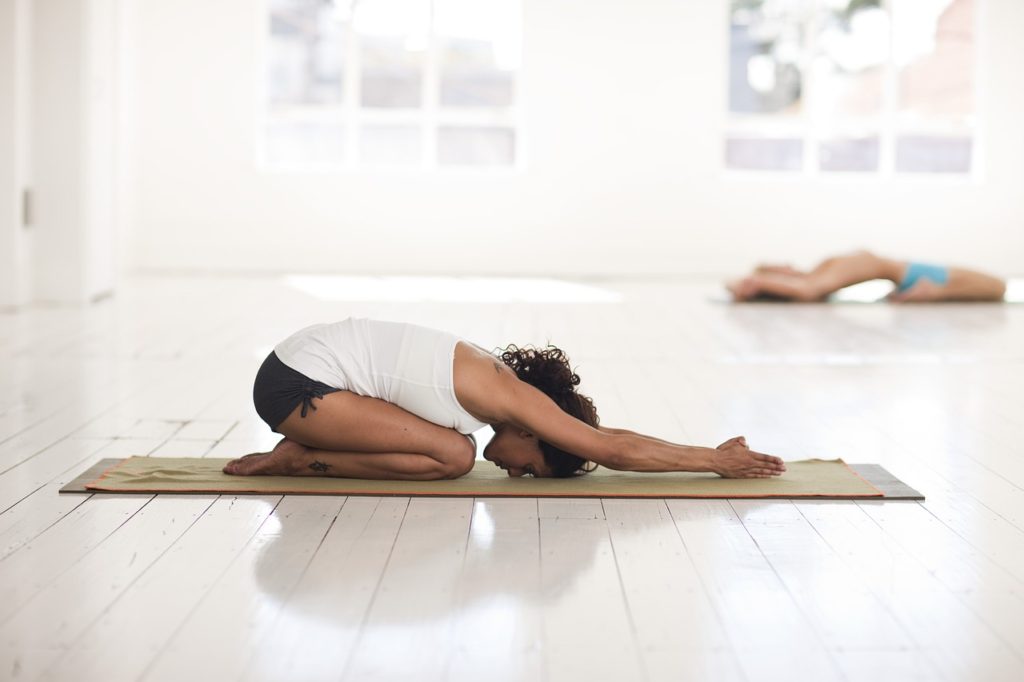
We practice yoga for our health and our spirit. We yoke
Many cheap yoga mats are made of toxic PVC, but what about the ones that are considered eco-friendly?
I personally use Jade Harmony Yoga Mats. Jade Harmony promises they use natural rubber avoiding synthetic rubbers made of PVC, PER, TPE, EVA. I was surprised to see my beloved mat on a list of tested yoga mats by the Eco Center.
The yoga mats represented a variety of brands, prices, and materials. Our test results–presented below for each mat and summarized in this table–showed that labels on the mats were in some cases accurate and in some cases vague or misleading. As is typical of consumer products, none of the mats listed the additives present in the base polymer.
Three mats were labeled with only Natural Rubber as the material. We found these to consist of polyisoprene, which is typically natural rubber. One of those mats (Jade Harmony) additionally had a layer of nylon on the top.

I am not sure the additional layer of nylon is a health concern or not, except for the fact that Jade advertises:
- Natural rubber tapped from rubber trees
- No PVCs or synthetic materials
- Made with sustainable resources
- Made in the USA
- Incredible grip and durability
Nylon is a synthetic material, thus there appears to be false claims made by Jade, yet of greater concern are the companies passing off their yoga mats as healthier containing PER, which in reality contains PVC. Companies like Ajna with their organic jute yoga mat and Gaiam with their Premium Yoga Mat are confusing consumers.
The Ecology Center explains more about the concerns of PER:
PER, or “polymer environmental resin,” may be a misnomer, as these mats were made of PVC. PVC–regardless of what additives may or may not be present in the finished product–is responsible for significant toxic emissions and pollution of nearby neighborhoods during manufacture and disposal, as well as exposing workers to toxic chemicals.
The apparent manufacturer of PER, Lan Song Industrial LLC, makes a number of claims about the material. The manufacturer states PER is made of PVC plus other unspecified additives in an “environmentally friendly” process, producing a material that is biodegradable and does not emit hazardous gases when incinerated. We were unable to find substantiation for these claims.
Yoga Mats 2019
Gaiam makes the following claims about their premium 6mm mat:
- NON TOXIC and 6P FREE PVC yoga mat is a healthier choice for you and the planet and free of DEHP, DBP, BBP, DINP, DIDP and DNOP (Note: For best results unroll and air out your mat for 2 3 days before use a harmless odor may be present when unwrapped)
Ajna makes these claims:
- NON TOXIC and 6P FREE PVC yoga mat is a healthier choice for you and the planet and free of DEHP, DBP, BBP, DINP, DIDP and DNOP (Note: For best results unroll and air out your mat for 2 3 days before use a harmless odor may be present when unwrapped)
Yet both of these mats tested positive for PVC.
Patanjali identified the five
The Ecology Center writes:
Due to the eco-friendly marketing of these yoga mats, consumers may be misled to believe they are purchasing a product that does not negatively impact humans or our environment…Ecology Center researchers urge yoga mat companies to better investigate the suppliers of their mats and label their products with accurate information rather than vague terms. At the current level of disclosure, shoppers do not have insight into how these products are impacting their world and may be misled into believing they are being eco-conscious consumers.
I actually didn’t pay that much attention to this. Thank you for the information.
Thank you for this information! But what brand is the best?